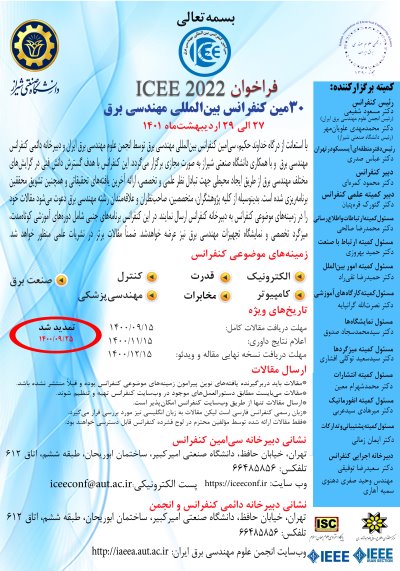0% Complete

نویسندگان :
کلمات کلیدی :
چکیده :
لیست مقالات بایگانی شده
مهدی اسکندری - محمد عظیم کرمی
حسین حصاربنی - زهرا کشاورز گندمانی
Mobin Azimipanah - Mahyar Hassanifar - Yousef Neyshabouri
علی مجلسی کوپائی - سعید باقری شورکی - احمد شعبانی
AliReza Beigy - Farbod Azimmohseni - Ali Sabzejou - Mehdi Tale Masouleh - Ahmad Kalhor
Mohammad Yousef Darmani - Shiva Karimi
Abdolah Amirany - Kian Jafari - Mohammad Hossein Moaiyeri
Amirhosein Hoseini - Saeed Hosseinnattaj - Jafar Adabi
Amirhossein Sabour - Mahsa Ramezan Pour - Mohammad Yavari





